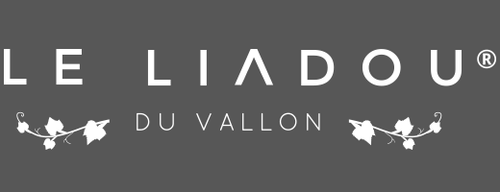The Liadou du Vallon ® Workshop
In the Liadou du Vallon cutlery workshop ®

The Liadou ® boutique and workshop are located at the same address, 17 Quai du Cruou, in the heart of Marcillac-Vallon. Separated from the shop by a glass roof, it is in the workshop that each Liadou ® comes to life. Open to visitors free of charge, it allows you to discover the manufacture of pieces worked and shaped by hand, in the purest Aveyron cutlery tradition. Passionate about cutlery since 9th grade, holder of a CAP in cutlery in Thiers, and trained with internship supervisors in Laguiole, Alexandre is the Master Cutler of Liadou du Vallon ®. Safe gestures, precision, dexterity, technicality, discover his work through a film made during the manufacture of a Liadou ® Original in Thunder Oak.
Workshop-Boutique, 17 Quai du Cruou 12330 Marcillac-Vallon
TIMES:
- Tuesday to Saturday: 09:00–12:00 and 13:30–18:00

The 10 steps to making a Liadou®...
- Sawing of the handle into rectangular slabs: all the handle materials are first cut out with a band saw and by hand.
- Lapidary planing of the inserts: ensure that the thickness is perfectly even so that there are no gaps once the neck is mounted on the plate.
- Preparation of the blade to adjust the mechanism: sanding and smoothing the adjustment areas. Because it is high, the Liadou ® blade provides exceptional sharpness. The original width of its blade - greater than many folding knives - allows a specific grind without altering the robustness.
- Preparation of the handle: drilling of the plates, preparation of the parts for assembly and assembly (spring, blade, plates, etc.). Chamfers are made on the plates so that the rivets have no play.
- Fixing of the two plates, the spring and the pads: they are made on the workbench, with a vice, anvil and peening hammer. Image operations.
- Pre-shaping of the handle by belt sanding: this is done on the backstand.
- Assembling the blade, assembling the knife and tensioning the spring: adjustment by sanding and filing the height of the spring (knife open and knife closed). To achieve the perfect setting, the pre-assembled knife is assembled and disassembled as many times as necessary. The spring is tuned to provide an elastic stop ("the sanding") and ensure that the blade does not hit the spring with the risk of blunting the edge. Then riveting front and back.
- Handle-to-band shaping: Achieved by using increasingly finer grains of band. It is during this stage that the perfect curves and the exact symmetry of the knife are obtained by the cutler with gestures that are both lively and precise.
- Satin finish of the metal parts: carried out with a polishing machine, on the blade and the contour of the knife. Some wooden handles also require a cotton rubbing finish.
- Sharpening the blade with the strip: this is the final step that will give its legendary sharpness to the Liadou ® blade.
The most used cutlery tools in the manufacture of our knives

Some machines used to manufacture a Liadou® are specifically adapted to the needs of our workshop:
- The band saw: used to cut out and give the initial shape to the two plates of the handle. All materials (wood, horn, fossil materials, bones, resins, etc.) are first cut on this tool.
- The backstand (or belt sander): with lapidary and abrasive plate. First used before the handle was assembled to the blade. Then to sand spring and blade in order to whiten them and make them smooth. Finally for the blade sharpening operation.
- The column drill: for drilling with different drill bits and preparing the handle, spring, blade and plates for assembly.
- The bench, the anvil and the files: used to fix the different parts of the knife, with rivets and matting with a hammer. Filing rivets and metal parts.
- The polishing machine: used for satin-finishing metal parts
- The furnace: used to bake the springs before hardening. When customizing springs by guillochage, the manual sculpture of the springs is done before quenching. The quenching step is then carried out by heating the parts to 1050°C and immersing them in an oil bath.
- The cleaning fountain: used to remove all residues of rubbing and polishing paste. Used for horn or synthetic material knives. Wooden or bone knives are cleaned with a rag and by hand.
- The Bubble grinder: made of compressed nylon, it eliminates scratches and smoothes parts.
- Wheels: these are used for certain types of guillochage, in addition to files.
The Liadou du Vallon ® is guaranteed for life against all manufacturing defects. It is now available in 4 collections: Le Liadou ® Original, Le Liadou ® Exception, Le Liadou® de Table (boxes of 6 knives) & Le Petit Liadou
Discover the Le Liadou du Vallon collections ® ...
| THE ORIGINAL LIADOU ® | THE LITTLE LIADOU ® |
| THE TABLE LIADOU ® | LIADOU EXCEPTION ® |
| THE LIADOU RACING ® | THE LIADOU TIRE-BOUCHON ® |

